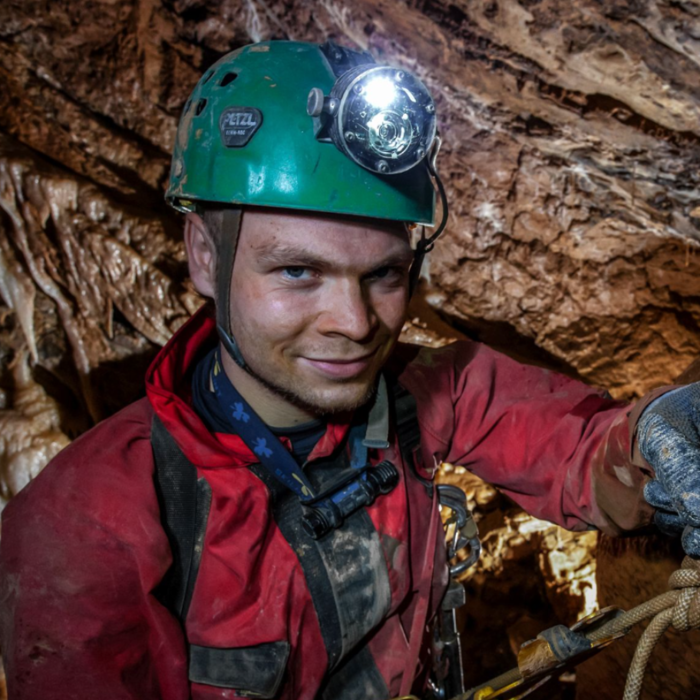Witold Hoffmann

Diving since he was 18 (2009). Fascination with the underwater world led the chemist-scientist towards flooded mines in Poland, which resulted in a ‘holiday break’ on a diving internship in the mecca of cave divers - Cala Gonone in Sardinia. The break extended a bit, to 4 years of full-time work as a guide and cave instructor. His parallel activity as a speleologist in Tatra added a package of knowledge and skills allowing him to explore caves in their entirety - regardless of whether it is a flooded siphon or a deep alpine cave in the mountains. Since 2017, the main axis of his caving activities has been the exploration of Sistema Cheve (Sierra Juarez, Oaxaca, Mexico) - potentially the deepest cave in the world, with hydrologically confirmed potential of a ~2600m depth.
Activity:
- USDCT Sistema Cheve, expeditions 2017, 2018, 2019, 2021, 2023, 2024. Total, almost 200 days underground.
- Bel Torrente, explorations 2014, 2015, 2016, 2021, 2024
- Hoher Goll, Austria – expeditions 2021, 2022, 2023, 2024
- Explorations on Sardinia (Supramonte and caves of Orosei gulf), Montenegro (Prokletije). Wide activity in the Tatra mountains, and flooded mines of Lower Silesia, Poland.
Title of the presentation: Bel Torrente – exploration after S6. Challenges of multi-day post-sump exploration.
Bel Torrente is a spring located in the limestone cliff face of the Gulf of Orosei, in Sardinia. The first sump (~1200m, -43m) is a popular target for touristic cave dives. In 2009, Thorsten Waelde and Rick Stanton explored sump 2 (~600m, -62m), discovering extensive dry passages behind it, and siphon 3 located at the bottom of a 15m pit requiring rope access. Further exploration becomes more challenging. The first reconnaissance dive in sump 5 was not completed until 2015, and it was passed just in 2021. Over the years of exploration, Bel Torrente has exceeded 10km in total length. Further exploration requires multi-day camps behind the siphons, perfect teamwork, and an unconventional approach to dive planning tactics, equipment, and logistics. The presentation will present the history of exploration of this system, and tell about the 6-day long 2024 campaign to dive siphon 6, with probably the first-ever transport of a ukulele to a camping site behind a siphon.
2024-11-24
- 15:00 - 15:50
- 50 min
- lectures hall 1

